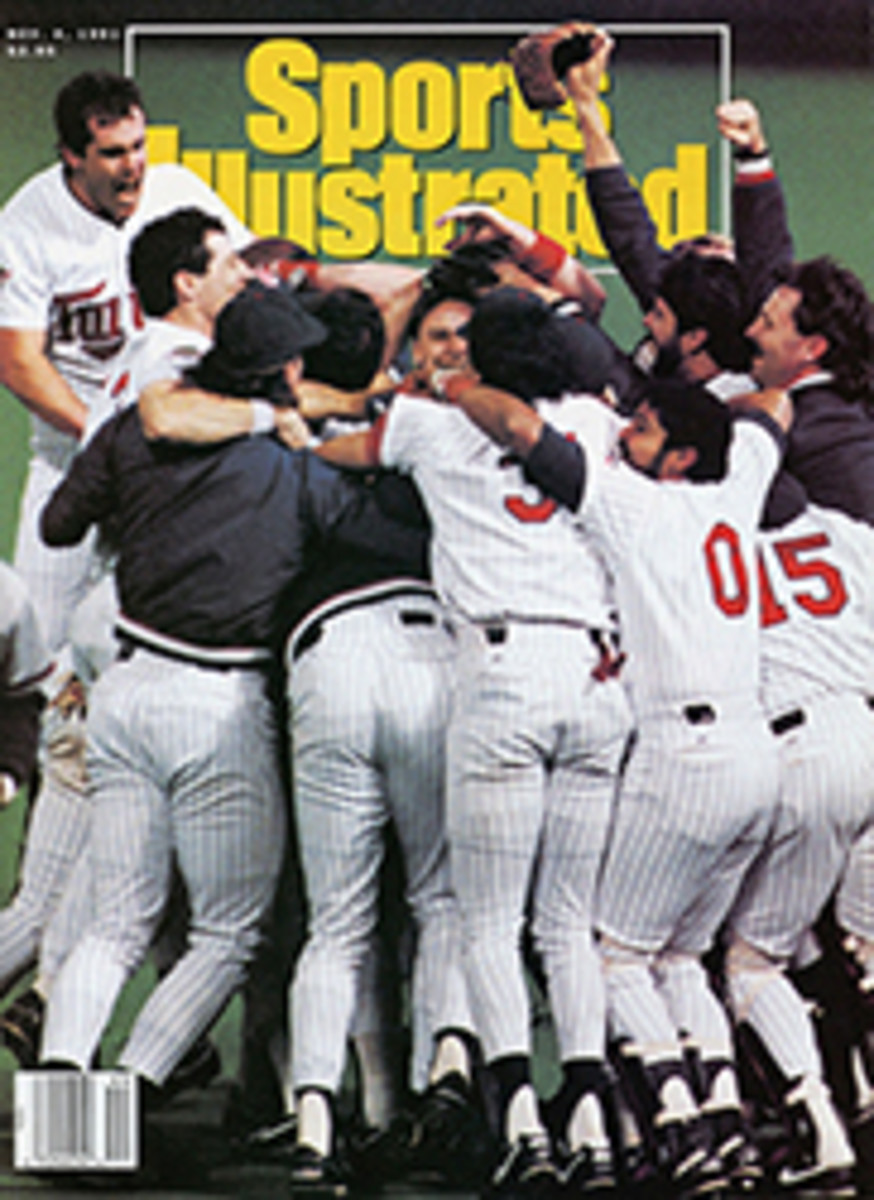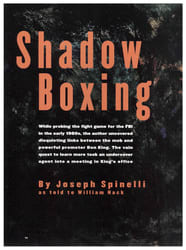
Making an Honest Living by Playing the Angles
It is a long way from the men's professional racquetball tour back to the streets of New York City's Spanish Harlem, but Ruben Gonzalez has returned to the old neighborhood this sunny day. He stands on the rooftop of a six-story tenement and divides the streets of the barrio into the gang turf of his youth. The Harlem Blues, Gonzalez's old gang, patrolled the area around 109th; the Vice Roys and Young Lords controlled adjacent fiefdoms. Creeping warily toward the roof edge, Gonzalez, currently the sixth-ranked professional racquetball player in the world, taps his heavy thighs and says, "This is where I got these, playing roof tag." Cautiously he stares at the six-foot chasm between buildings and the dark maze of alleys below. "I've watched friends get stabbed, clubbed, die of overdoses and fall playing roof tag. Sometimes I can't believe I survived it."
Gonzalez has done more than survive an adolescence spent cruising the streets and often sleeping in parks. At 39, he has become the grand old man of professional racquetball. In a sport that tends to reward the power of players in their 20's, Gonzalez relies on quickness, intelligence and, above all, the kind of never-say-die determination that is rarely spawned on air-conditioned courts in carpeted clubs. Since 1986, Gonzalez has held a Top 6 ranking. In 1988, at 36, he stunned five-time national champion Mike Yellen to become the oldest pro to achieve a No. 1 ranking. With plans to play professionally until age 45, Gonzalez is already the Nolan Ryan of his sport. So why haven't you heard of him?
In the late '70s, racquetball boomed as more than 12 million amateurs took to newly built YMCA and health-club courts. Racquetball magazines and big-name sponsors promoted the professional tour. Dave Peck, the top-ranked pro player in 1982, recalls the era. "A lot of guys had it cushy," he says. "They had sponsorships, endorsements and were sent everywhere. But they wanted it all."
Hoping to rake in big money for themselves, a group including some of the game's top pros gained control of the tour in the early '80s and essentially froze out most of the other players. But instead of having it all, they ended up having almost nothing, as additional developments also alienated sponsors. The diminished tour hit the skids, and it has taken nearly a decade for it to approach the momentum it once enjoyed.
As a result, there are no Air Gonzalez ads and no appearances on the The Arsenio Hall Show for racquetball stars. Gonzalez earns between $60,000 and $100,000 in a good year, and that includes everything: tour winnings, instructional camps, clinics, exhibitions, endorsements and earnings from his pro shop in a Lyndhurst, N.J., health club. It's a pittance compared with the millions raked in by superstars in other sports, but it allowed Gonzalez, and his wife, Uby, to move out of the barrio and into a modest house in a quiet Staten Island, N.Y., neighborhood with their sons Eddie, 16, and Jarett, 14, and daughter, Rubi Alexandra, 2.
The neighborhood of Gonzalez's own childhood was anything but quiet. In 1953 his stepfather, Lumen Mendez, moved the family from Puerto Rico to New York in search of opportunity. The only opportunity Mendez could find, however, was a low-paying job as a porter. Remembering these years, Gonzalez says, "All my friends were poor; that was the only life we knew. When I needed new shoes...there was no way. I'd have to glue the old ones together. I always wanted Converse sneakers, but all we could afford were the two-dollar Skippies."
From an early age, Gonzalez learned that survival was the only game in town. Walking alone through a gang's territory was an invitation for a beating. There was strength in numbers, so Gonzalez began wearing the colors of the Harlem Blues at age 11. He quit school in the ninth grade, and buoyed by his status as a gang member, he refused to return to Puerto Rico with his family when he was 15. He lived some of the time with his grandmother or with friends, but most nights he simply crashed in the Blues' clubhouse in a neighborhood park. During the day he packed groceries for 10 cents a bag, often lugging them up six or seven flights of stairs for an additional dime.
"If I wasn't working, I'd get up in the morning and play handball, stickball and stoopball all day," he says. "Then 6 p.m. came and I'd develop my night attitude. We'd hang out in the park, drink beer and liquor, steal food from a bodega and look for action. I was in fights all the time. I'd see ladies getting ripped off, people getting mugged and junkies shooting. I'd think, This is just how life is. I'd beat up another gang member and have no feelings about it. Hey, either you did it to them or they did it to you. It was normal."
Fortunately for Gonzalez, it was also normal, or at least acceptable by the macho code of the streets, to play sports. But as a school dropout, Gonzalez had little access to organized sports like baseball. Instead he concentrated on handball, which requires only sneakers, a ball, a wall and an opponent. Even when he was an eighth-grader, crowds gathered to watch him dive across the concrete courts with little apparent regard for his hide. He began playing for 50-cent bets, but the money was not really what kept him going—it was pride.
Eventually, handball would also provide him with opportunities to leave the barrio and to see other ways of life. A reigning neighborhood champ by the time he was 18, he would venture to the courts at Coney Island and at West Fourth Street in Greenwich Village to challenge the local kingpins. Gonzalez won wherever he went. Today, such mavens as handball historian Mickey Blechman greet him with a hug and old memories. "Ah, Ruben," Blechman says. "He could've been a success in any sport because his heart is three times the size of anyone else's. He never cheated, never complained and went after everything from the day he showed up."
In one of his matches with Steve Sandler, generally acknowledged as the top one-wall handball player from the late '60s through the mid-'70s, Gonzalez demonstrated why he's still a legend wherever the game is played. According to Blechman, Sandler hit a virtually unreturnable shot off the right edge of the court. Gonzalez went after it, jumping over four rows of spectators in their lawn chairs. Somehow he returned the ball. Sandler was shocked, but he proceeded to send another shot screaming off the wall. Gonzalez vaulted back over the spectators, onto the court, and killed it.
Though Gonzalez was king of the courts, handball and his minimum-wage jobs did not pay the rent or feed his first wife and their infant son, Ruben. Eventually, handball cronies like Blechman and Russ Mannino, who had opened a racquetball club on Staten Island, persuaded Gonzalez to give that sport a try. Gonzalez agreed and began riding the subways and the ferry on a two-hour commute each way to work at the front desk of Mannino's club.
He was 25 when he first stepped onto a racquetball court. Using a $5 racket, he pounded the ball for hours each day to master the angles of this game that is played off four walls and the ceiling. Returning home at night, he remembers, "I'd climb to the roof and swing my racket hundreds of times, crying, 'God, please make me good at this!' " Before long Gonzalez was entering weekend tournaments and carting home huge trophies—and prize money up to $200.
When he joined the pro tour in 1981, Gonzalez realized that at 5'9" and 160 pounds he could not match power strokes with the young bulls. Rather than trying to develop an unhittable serve (some pros can serve in the 170-180 mph range), he brought his street smarts to bear on the rock 'em, sock 'em game. "That court is my turf," Gonzalez says. "When I step out there I'm thinking, This guy's trying to take food from my table.... No way! I know what it's like to be hungry. I bring that hunger and the aggressiveness I grew up with out on the court."
Along with gaining a reputation for ferocious determination, Gonzalez surprised the racquetball world with his sportsmanship. In 1985, still looking for his first pro tour win, he and Marty Hogan, the sport's perennial champ and pit bull, were locked in a five-game battle in Arlington, Va. It was tied at two games apiece, with Hogan serving and up 10-8 in an 11-point final, when Gonzalez ended a furious rally with a forehand kill. The referee called the shot good. Gonzalez regained the serve, momentum and the opportunity for a tremendous upset. According to pro Jerry Hilecher, what happened next astonished the crowd. "Ruben overruled the ref and called a skip [the ball touched the floor before hitting the front wall] on himself, handing the match to Hogan," says Hilecher. "No one could believe it. It was unheard of. It gave Ruben lasting respect from the other players and the fans. His message was that winning's not as important as integrity and having pride in yourself."
Though his racquetball skills have been his ticket out of the barrio and into a comfortable home and to tours of South America and Europe, Gonzalez, who has been voted Sportsman of the Year four times by his peers, never forgets where he started. "It's in my blood," he says as he walks his old streets. "The salsa sound, the food, the energy I feel when I visit the old neighborhood.... I'll always remember what might have been. Last July Fourth I saw my old best buddy, with no teeth, wearing shabby clothes and riding a broken-down bike. It could be me, I thought."
PHOTO
LOUIS CAPOZZOLA
Gonzalez mastered his moves on handball courts in Spanish Harlem.
PHOTO
LOUIS CAPOZZOLA
In the barrio for a clinic, Gonzalez can speak from harsh experience about getting out.
PHOTO
LOUIS CAPOZZOLA
Gonzalez gives his son Jarett, 14, an early start in racquetball.
Marty Kaminsky is a free-lance writer and A-level racquetball player.

